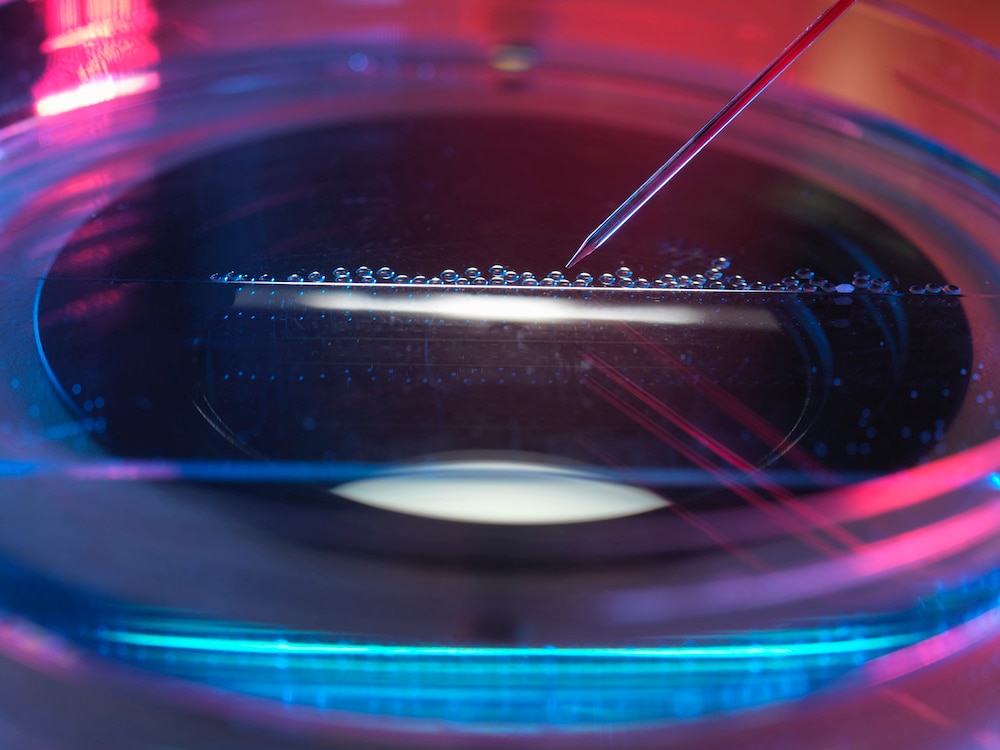Create a free profile to get unlimited access to exclusive videos, sweepstakes, and more!
Zero-G could be the answer to producing more stem cells — and saving more lives
Microgravity can be the next frontier for putting stem cell research (and more) under a literal microscope.

What happens when disease research on Earth, however exhaustive, isn’t enough to find an elusive treatment? Blast that research to space.
Microgravity can be the next frontier for putting stem cell research under a literal microscope. Biomanufacturing, a type of stem cell production that relies on microbes and other biomaterials to produce more biomaterials for medical purposes, could be most efficient and productive in microgravity. Zero-G can wreck the human body. However, it also gives biological tissues and processes special properties that give research an assist that would be impossible on Earth.
There are some conditions in space that cannot be replicated on terra firma. Research scientist Arun Sharma, now the head of a new research lab at Cedars-Sinai Medical Center, coauthored a study recently published in Stem Cell Reports. He is optimistic about the future of biomanufacturing in space, especially for the purposes of modeling diseases, creating biomaterials such as 3D-printed organs and tissues, and producing stem cells that have nearly endless potential.
“Microgravity provides a unique environment for impacting biological tissues and processes,” Sharma told SYFY WIRE. “The lack of gravity-mediated sedimentation, altered fluid dynamics, and changes in biomechanical cues enable production of biomaterials that may not be possible on Earth. This could have significant value in the production of advanced medical devices.”
3D-printed tissues and (eventually) organs could someday save lives that are often lost in the wait for a transplant. Bioprinting requires certain biomaterials, including bio-inks that can print three-dimensional tissues, that do not need to be as viscous in space as they are on Earth. This opens up opportunities to create more and more elaborate structures until we someday see a human organ emerge from a printer. Other processes that could benefit are biofabrication processes that need thin layers laid down on a surface with incredible precision.
Disease modeling is exactly what it sounds like. It is a plus for detrimental conditions caused by microgravity, such as bone loss and sarcopenia, or muscle loss, both of which fast-forward the effects of aging here on Earth. Experiments performed on disease models in space therefore have a double advantage. The effects of microgravity will show up on their own without further simulation, and scientists will be able to test out treatments right in the spaceflight environment where they will be used. The treatments can also be adjusted to treat those diseases on Earth.
“Skeletal or cardiac muscle loss in space is like an accelerated version of that experienced here on Earth,” Sharma said. “Additionally, recent studies have shown alterations in the immune system during extended spaceflight, which could help us better understand age-related immunological decline and malignancies as well.”
Stem cells in various phases can be used depending on how much flexibility is needed. Totipotent stem cells are in their earliest phase and can morph into just about anything. Pluripotent and multipotent stem cells have become partly specialized, but can still be used to create organoids and other models. Organoids sound like something that crawled out of a B-movie from the ‘80s, like brain organoids that grew their own proto-eyes, but these miniature versions of organs grown in a petri dish are the next generation of biological research.
Later this year, a team from Cedars-Sinai will be sending pluripotent and multipotent stem cells to the ISS so the cellular properties that are altered by microgravity can be studied further. What the researchers want to see is how well the cells divide to produce more cells as well as how they may differentiate differently and whether they hold on to their potential for turning into multiple types of tissues for a longer or shorter period than they do on Earth. Sharma is excited for what this study could reveal.
“We will look at various genetic and functional markers in the stem cells aboard the ISS, using RNA sequencing, gene expression, analyses, and microscopy,” he said. “The ISS is quite an advanced research laboratory, so we believe that these experiments should be quite feasible and produce data that is reliable.”


























